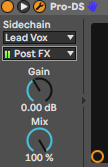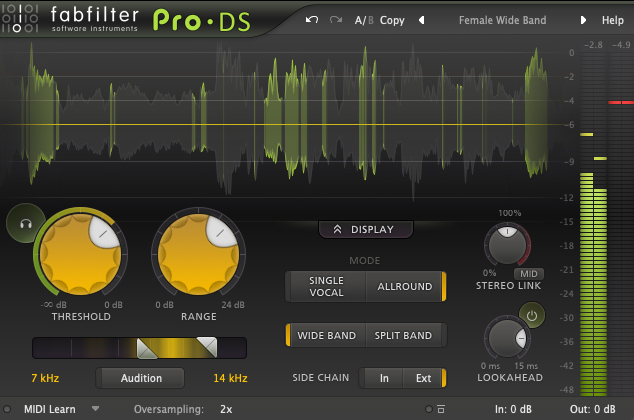How to Sidechain
- 432Studios
- Oct 16, 2023
- 3 min read
Updated: Nov 30, 2023
Simple guide and use cases
In audio production, the process of sidechaining remains a powerful and versatile tool, often likened to a magician's secret wand. Whether you're a seasoned producer or just diving into the world of music production, understanding sidechaining is essential for creating clean, dynamic, and professional mixes. In this article, we'll demystify the sidechain process, explore its practical applications in modern music production, particularly in vocal and instrumental processing, as well as kick and bass interplay, and unveil advanced sidechaining techniques. Let's uncover some sidechain secrets, applications, and problem solving solutions.
Demystifying the Sidechain Process:
At its core, sidechaining involves using one audio signal, typically known as the 'trigger', to influence another signal, referred to as the 'target'. The essential concept behind sidechaining is that the target signal responds dynamically to the amplitude of the trigger signal. This process allows you to create volume adjustments or apply various audio effects automatically.
In its simplest form, sidechaining is commonly recognized in the context of equalizers but mostly of compressors, where the volume of one track is controlled by the level of another. This technique aids in maintaining clarity and balance within a mix.
Applications in Modern Music Production:
1. Vocal and Instrumental Sidechaining:

In the realm of vocal and instrumental processing, sidechaining provides an invaluable tool for achieving clean and cohesive mixes. Let's consider an example: Imagine you have a vocal track with lush reverb and delay effects. Without sidechaining, these effects may interfere with the clarity of the vocals during intense moments, potentially causing a 'washout' effect. By sidechaining the reverb and delay to the vocal, you ensure that these effects automatically 'duck' when the vocal is present, maintaining vocal prominence. This technique leads to a seamless blend, preserving the vocals' impact while keeping the effects in check.
2. Kick and Bass Sidechaining:

In the electronic music realm, where the kick and bass are the rhythmic and melodic pillars of a track, sidechaining plays a crucial role in maintaining a clear and impactful low end. By sidechaining the bass to the kick drum, you create a 'pumping' effect. When the kick hits, it momentarily reduces the bass volume, allowing the kick to cut through the mix. This dynamic interaction is the essence of the 'heartbeat' in many electronic dance music genres.
Advanced Sidechaining Techniques:
· Frequency-Selective Sidechaining
One advanced sidechaining technique is frequency-selective sidechaining. This approach allows you to focus on specific frequency ranges within your audio signal. For example, you might want to reduce the presence of a bass instrument when the vocals are active, but only in the frequency range where the vocals primarily reside.
Here's an example:

Imagine a scenario where your bass and vocals share some frequency overlap. To avoid muddiness in your mix, you can employ a multiband compressor with sidechain functionality. You set it to detect the vocal frequencies and apply sidechain compression exclusively to the overlapping frequencies, leaving the non-overlapping parts of your bass track untouched. This advanced technique ensures that your bass doesn't compete with your vocals in the critical frequency range, maintaining overall mix clarity.

Common Problem-Solving with Sidechaining:
Beyond enhancing your mix, sidechaining can be a problem-solving tool. For instance, if your mix sounds cluttered, sidechaining competing elements can create sonic space. A common example is sidechaining a pad instrument to a lead synth, reducing pad volume when the lead plays. This technique creates a more pronounced lead melody without sacrificing the atmospheric pad. Another frequent challenge is dealing with vocal sibilance. By sidechaining a de-esser to your vocal track, you can tame excessive sibilant frequencies, ensuring a smoother and more controlled vocal delivery.
In conclusion, sidechaining is a fundamental technique in audio production, offering dynamic solutions that elevate your mixes. Whether you're crafting immersive vocal and instrumental blends or sculpting the perfect kick and bass interplay, sidechaining equips you with the tools to create professional, balanced, and impactful soundscapes. Through advanced techniques like frequency-selective sidechaining, you can refine your mixes to a level of clarity and sophistication that sets your music apart. So, embrace the magic of sidechaining, and let your productions and mixes come to life with newfound dynamic precision.





Comments